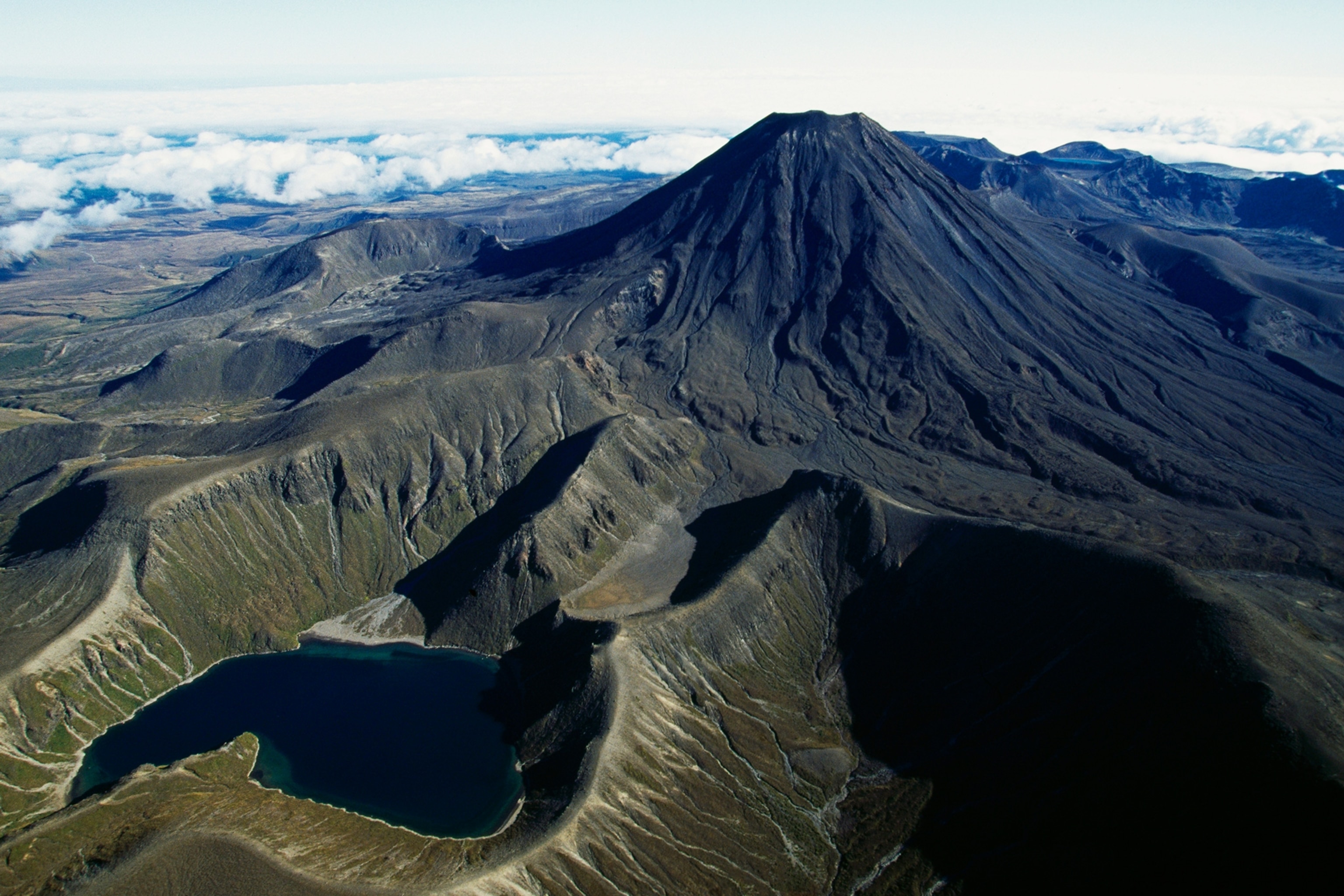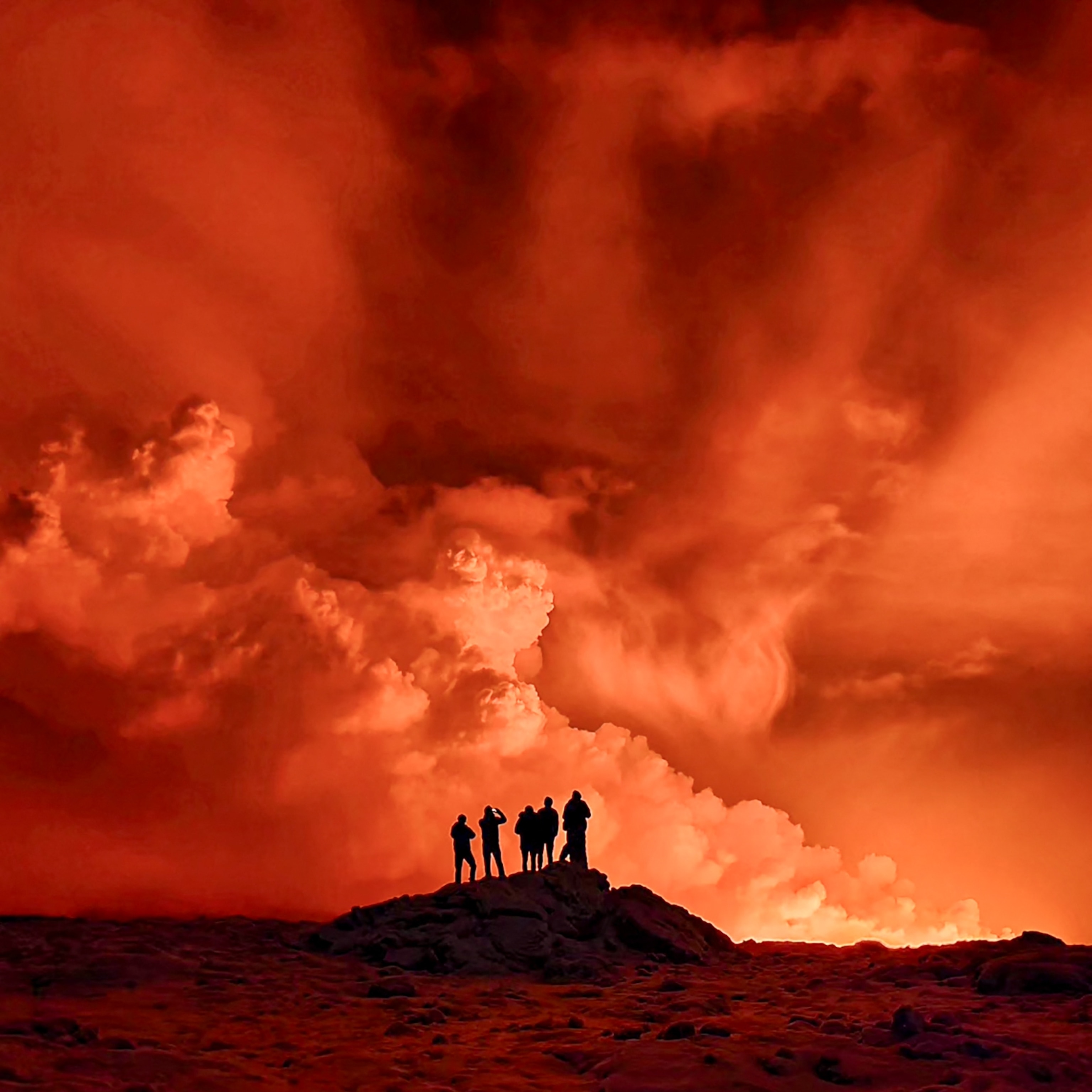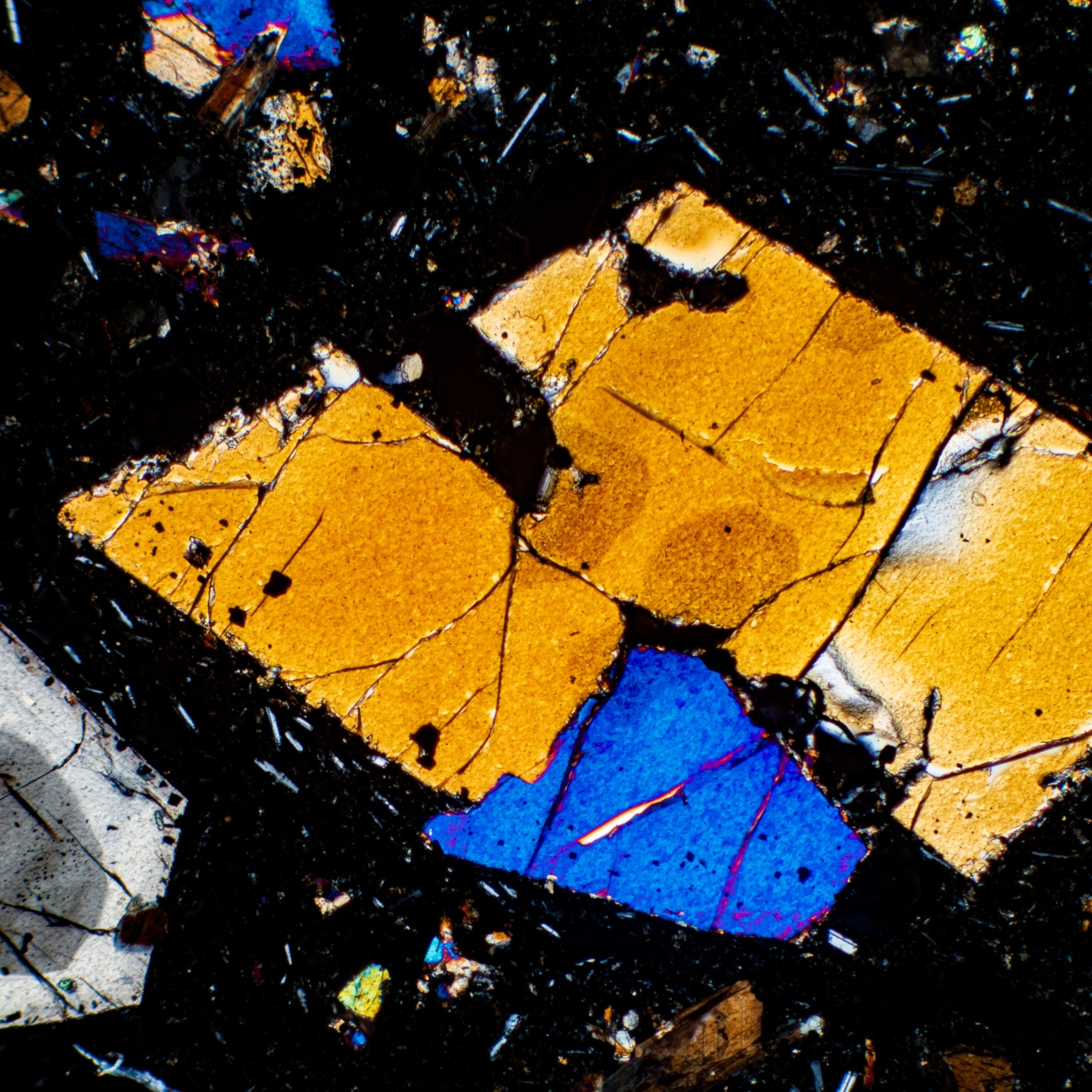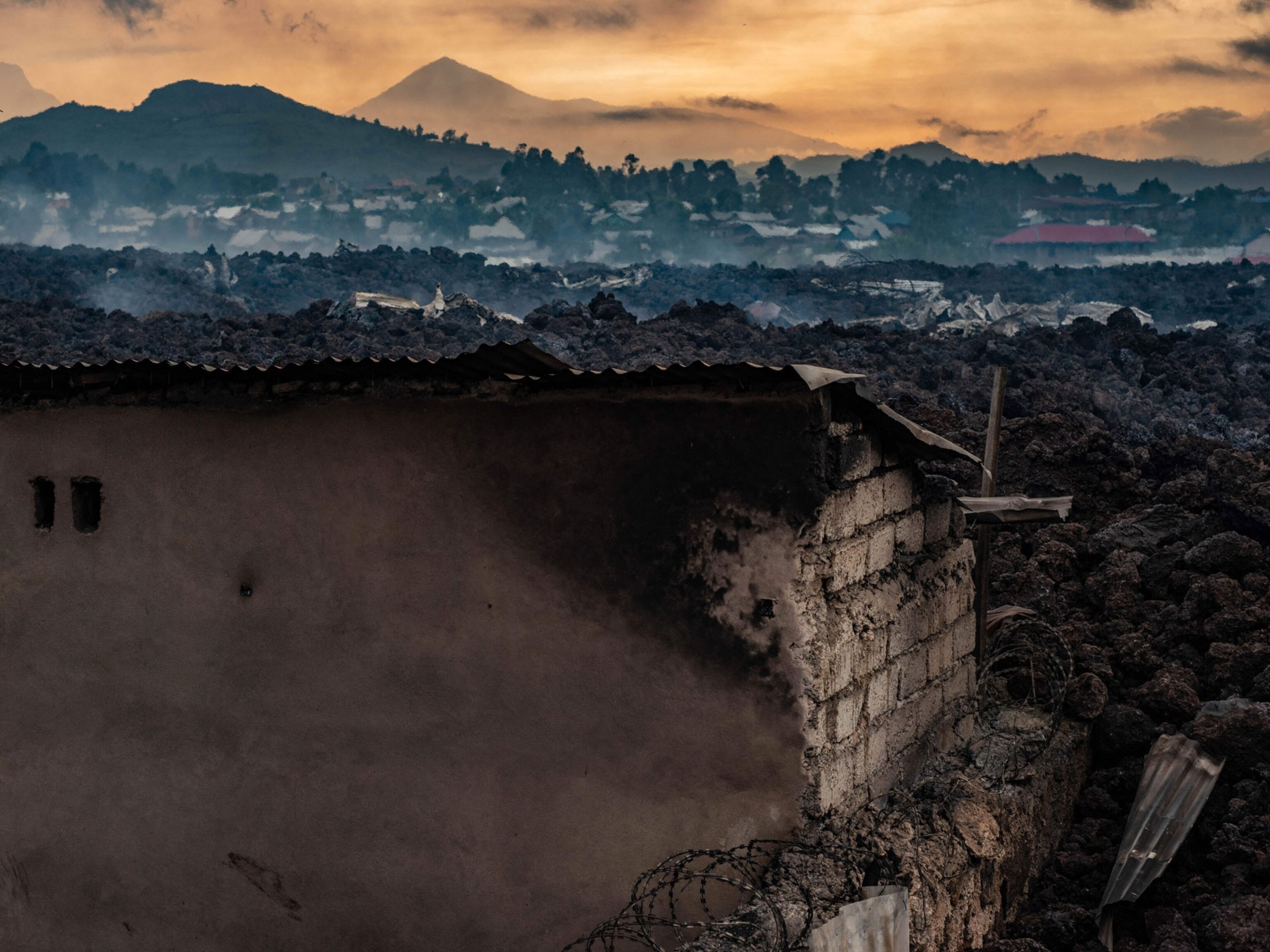Supervolcanoes are like the supervillains of the geologic world, as stories of their looming threat grow ever more exaggerated. Though massive eruptions do pose real dangers, misconceptions about them abound.
According to the United States Geological Survey, a volcano is considered “super” if it has had at least one explosion that released more than 240 cubic miles of material—a little more than twice the volume of Lake Erie. That places it at a magnitude of eight, the highest ranking on the Volcanic Explosivity Index, or VEI, which is used to measure the explosiveness of an eruption.
These are very large eruptions, the impacts of which would be widespread—from avalanches of hot rock and gasses racing down the volcano's flanks to global changes in climate. But there's an important caveat about supervolcanoes that most people commonly overlook: Just because a volcano has had a super-eruption once or even twice in its past doesn't mean its future eruptions will be just as big.
What's more, very few volcanoes reach such a super-status. For the some 5,000 eruptions with an assigned VEI that took place during the last ten thousand years, not a single one ranked a VEI 8, according to the USGS. While dozens of volcanoes may be erupting around the world on any given day, scientists have identified just 42 eruptions that ranked a VEI 8 (or high 7) in the last 36 million years. (There's a little wiggle room in the number, because when judging historical events, it's difficult to estimate the extent of ejected material.)
Where did the term supervolcano come from?
According to an investigation by volcanologist Erik Klemetti for Wired, the origins of the term “supervolcano” are far from scientific. It was used as far back as 1925 in the travelogue Conquering the World, by Helen Bridgeman. Since then, the term has taken a winding path to popularity.
Klemetti, who now writes for Discover, notes that the initial geologic use of the term in the mid-1900s differs from its modern definition of a mega-eruption. Instead, many early citations used “supervolcano” in reference to an amalgamation of multiple volcanoes.
By the late 1900s, the term was picking up steam. But it seemed to truly launch into the stratosphere after the 2000 BBC/Horizon documentary Supervolcanoes, and was subsequently buoyed by a 2005 docudrama created by the BBC and the Discovery Channel about the now infamous Yellowstone supervolcano. While the term still elicits eye rolls from many volcanologists, its popularity in the media has forced "supervolcano" into scientific realms.
What about Yellowstone?
Yellowstone is now perhaps the most famous of the world's volcanoes that have produced VEI 8 eruptions. This geologic superstar has had at least three very large eruptions in its history: Two are super-eruptions that were VEI 8 (some 2.1 million and 640,000 years ago), and one eruption 1.3 million years ago was VEI 7, producing around 67 cubic miles of material.
While the unfounded fear in a pending Yellowstone eruption has swirled for decades, the BBC and Discovery's 2005 docudrama forever tied the volcano to its super-moniker. The film depicted what would happen if the volcano erupted again with a magnitude as large as its blast some 2.1 million years ago, which produced roughly 588 cubic miles of material. While such an eruption in the distant future is possible, the probability of it happening in the next few thousand years is “exceedingly low,” according to the USGS.
The magma lurking in Yellowstone's shallow reserve is between just 5 and 15 percent molten. An eruption usually requires at least 50 percent to gel in this gooey hot state. More likely than such an explosion is a lava flow—a spurt of slowly oozing molten rock. Although a lava flow can pose hazards for communities that lie in its path or spectators attempting to approach close enough to roast a marshmallow, those dangers are much easier to predict and avoid.





What other volcanoes are “super”?
There are many supervolcanoes around the world other than Yellowstone, including California's Long Valley, Japan's Aira Caldera, Indonesia's Toba, and New Zealand's Taupo. This latter supervolcano is the last to have ever released a super-eruption, which burst free some 26,500 years ago.
Several volcanoes are commonly called “supervolcanoes” but their eruptions haven't quite earned them this super status. Take Krakatau's 1883 eruption for example. The explosions were so loud, they could be heard nearly 3,000 miles away on Rodriguez Island, and they triggered towering tsunami waves that killed more than 36,000 people. Still, even that beast rated at VEI 6.
A volcano doesn't need to have a super-eruption to be dangerous; if people are nearby as it explodes, even small eruptions pose many hazards. That said, not all volcanic eruptions are dangerous. If an eruption takes place far from populations and flight paths, no one may even notice that the peak burst its top.
Where do supervolcanoes occur?
Supervolcanoes can occur in many situations. Some, like Yellowstone, can be due to hot spots, rising plumes of magma from deep inside Earth. Hot spots generate a trail of volcanoes as the ever-moving tectonic plates slowly march across the largely stationary plume, like the lengthy chain of volcanoes of the Hawiian Islands.
Others, like Toba in Sumatra, Indonesia, can form along subduction zones where one tectonic plate plunges beneath another. As the descending landmass sinks deep underground, temperatures and pressures climb, forcing the water from the rocks. That water reduces the melting point of the overlying rocks, forming magma that can fuel future eruptions.
Regardless of how the magma forms, however, a volcano needs a lot of it to produce a super-eruption. As the magma builds, pressure in the underground cavity increases. A super-eruption requires tons of pressure to actually jettison the huge pockets of molten rock through the surface.
Would a super-eruption kill us all?
In short, no.
While a super-eruption would no doubt be devastating, it wouldn't be a world-ending affair. For an idea of the effects of such an eruption, we could look to the 1815 explosion of Mount Tambora in Indonesia. At a VEI of 7, this explosion was not quite a super-eruption, but it gives a sense of the many dangers of such mega-blasts.
The explosion sent a superheated plume of hot ash and gas 28 miles into the air, upon its collapse producing searing avalanches known as pyroclastic flows. Such immediate hazards killed around ten thousand people, but that wasn't the only concern. The gasses and ash injected into the atmosphere darkened the skies, blotted out the sun, and altered the climate, resulting in what became known as the year without summer. Extensive crop failures, starvation, and disease followed, which killed around 82,000 more people.
What's most important to keep in mind about modern eruptions is that agencies around the world are keeping a close watch on supervolcanoes like Yellowstone, monitoring their every tremor and magma-laden belch. Volcanoes provide some notice of pending eruption and modern equipment helps scientists take their pulse with more accuracy than ever before. So while a super-eruption in the near future is exceedingly unlikely, these agencies will be the first to know and alert the public if one ever becomes imminent.
USGS: What is a supervolcano?
USGS: Comparison with other eruptions
Wired: The rise of a supervolcano
USGS: Questions about supervolcanoes
What's in Yellowstone's Future?
Using Seismic Waves to Image the Yellowstone Magma Storage Region
UCAR: Mount Tambora and the Year Without a Summer
USGS: What are some examples of supervolcanoes?
Related Topics
You May Also Like
Go Further
Animals
- Orangutan seen using plants to heal wound for first timeOrangutan seen using plants to heal wound for first time
- What La Palma's 'lava tubes' tell us about life on other planetsWhat La Palma's 'lava tubes' tell us about life on other planets
- This fungus turns cicadas into zombies who procreate—then dieThis fungus turns cicadas into zombies who procreate—then die
- How can we protect grizzlies from their biggest threat—trains?How can we protect grizzlies from their biggest threat—trains?
- This ‘saber-toothed’ salmon wasn’t quite what we thoughtThis ‘saber-toothed’ salmon wasn’t quite what we thought
Environment
- What La Palma's 'lava tubes' tell us about life on other planetsWhat La Palma's 'lava tubes' tell us about life on other planets
- How fungi form ‘fairy rings’ and inspire superstitionsHow fungi form ‘fairy rings’ and inspire superstitions
- Your favorite foods may not taste the same in the future. Here's why.Your favorite foods may not taste the same in the future. Here's why.
- Are the Great Lakes the key to solving America’s emissions conundrum?Are the Great Lakes the key to solving America’s emissions conundrum?
- The world’s historic sites face climate change. Can Petra lead the way?The world’s historic sites face climate change. Can Petra lead the way?
History & Culture
- Meet the ruthless king who unified the Kingdom of Hawai'iMeet the ruthless king who unified the Kingdom of Hawai'i
- Hawaii's Lei Day is about so much more than flowersHawaii's Lei Day is about so much more than flowers
- When treasure hunters find artifacts, who gets to keep them?When treasure hunters find artifacts, who gets to keep them?
Science
- Why ovaries are so crucial to women’s health and longevityWhy ovaries are so crucial to women’s health and longevity
- Orangutan seen using plants to heal wound for first timeOrangutan seen using plants to heal wound for first time
- Should you be concerned about bird flu in your milk?Should you be concerned about bird flu in your milk?
Travel
- On this Croatian peninsula, traditions are securing locals' futuresOn this Croatian peninsula, traditions are securing locals' futures
- Are Italy's 'problem bears' a danger to travellers?Are Italy's 'problem bears' a danger to travellers?
- How to navigate Nantes’ arts and culture scene
- Paid Content
How to navigate Nantes’ arts and culture scene







